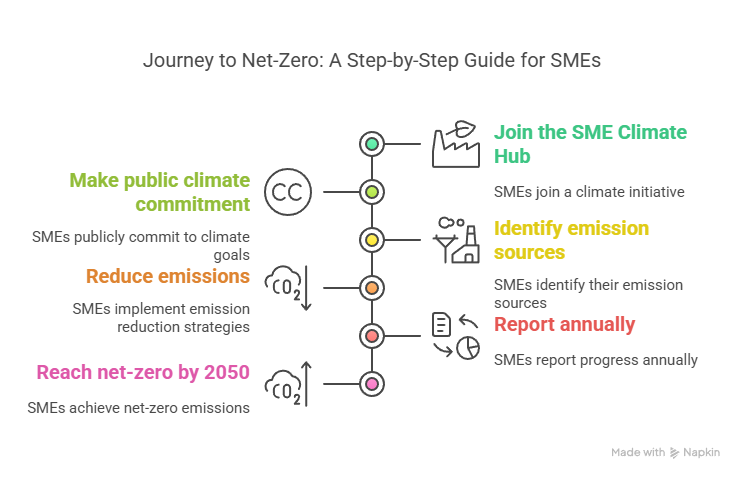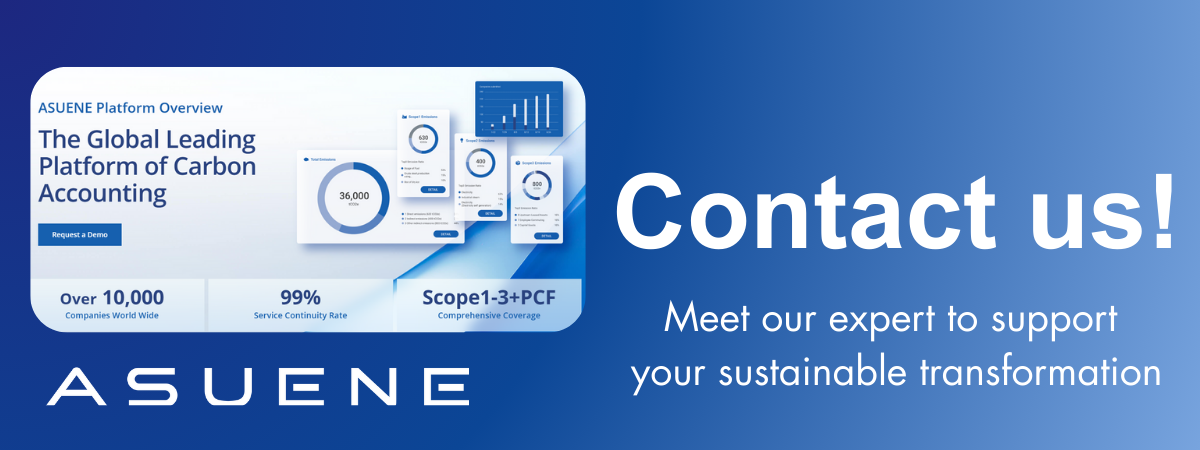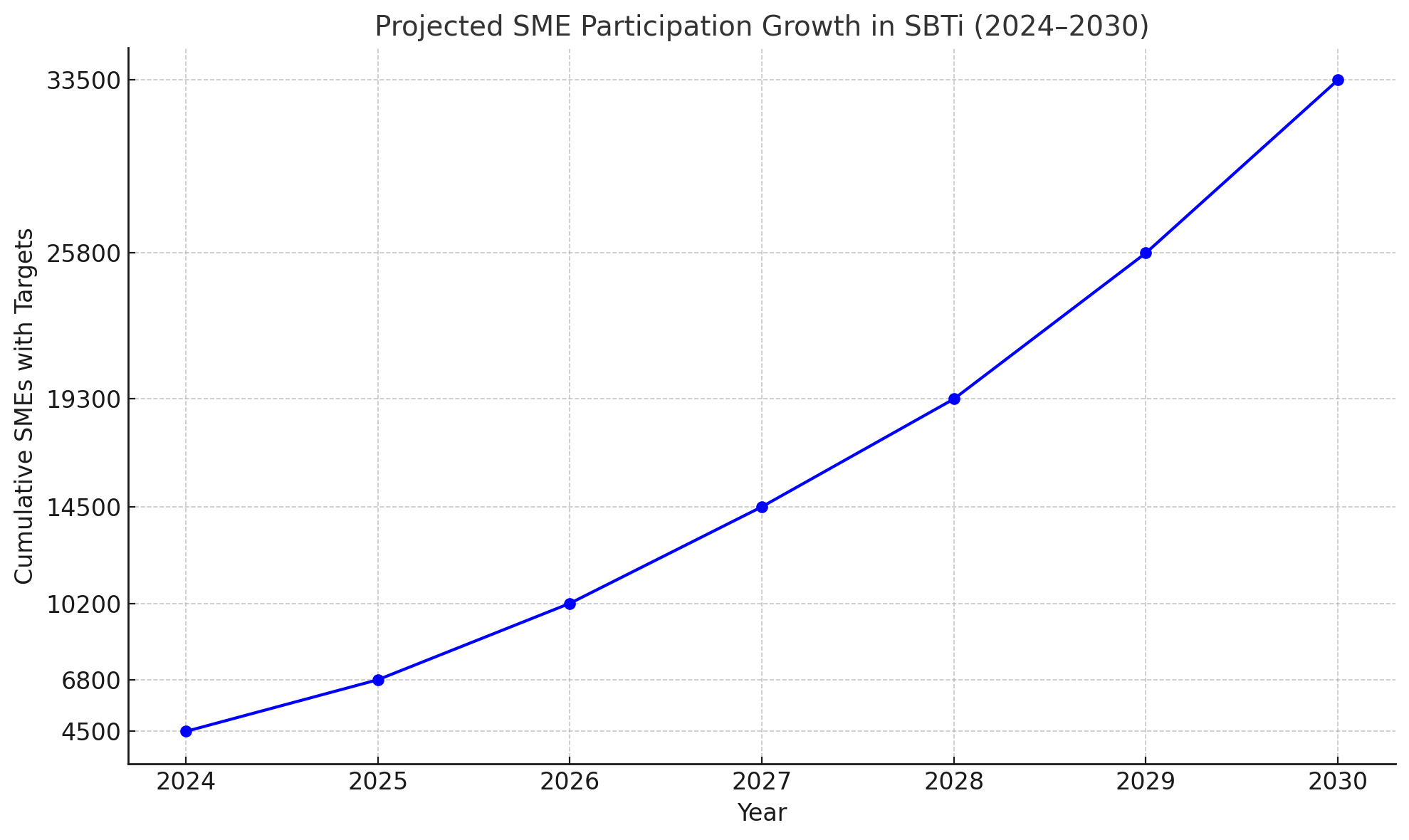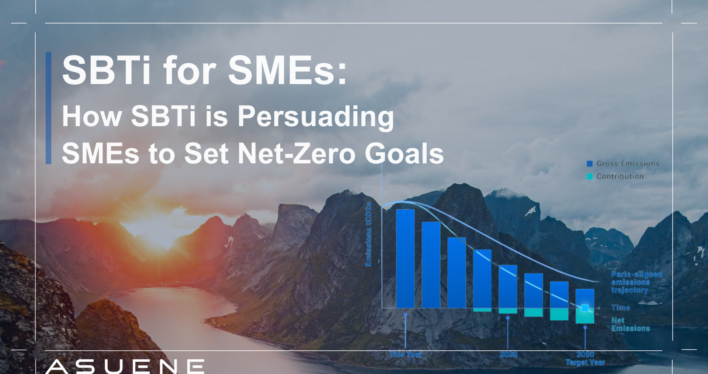- Article Summary
-
Why Small Businesses Must Act Now?
Climate change mitigation is no longer a matter solely for governments or multinational corporations. Small and medium-sized enterprises (SMEs) represent over 90% of global businesses and contribute significantly to greenhouse gas emissions, directly and indirectly. Yet, historically, these businesses have faced challenges in setting climate goals due to limited resources, knowledge, and technical support. Recognizing this, the Science Based Targets initiative (SBTi) launched a streamlined standard specifically for SMEs, helping them set credible net-zero targets aligned with climate science.
The SBTi’s SME-targeted framework simplifies the process by reducing reporting complexity and eliminating the need for third-party validation fees. The goal is to accelerate climate commitments among the world’s most numerous type of business. By helping SMEs decarbonize, the SBTi aims to make a measurable dent in global Scope 3 emissions — indirect emissions that typically originate across supply chains.
Barriers to Net-Zero for SMEs Before SBTi Intervention
| Barrier | Description |
|---|---|
| Limited Expertise | Lack of in-house sustainability professionals |
| Financial Constraints | High costs of third-party consultations |
| Complex Reporting | Overwhelming technical language and procedures |
| Unclear ROI | Difficulty quantifying climate investments’ business value |
The SBTi Standard for SMEs

The SBTi’s SME Climate Hub serves as a one-stop platform where small businesses can commit to science-based targets, access practical tools, and learn from peers. Companies employing fewer than 500 staff members are eligible. Rather than requiring full disclosure and extensive scenario modeling, SMEs are asked to commit publicly to halving emissions by 2030 and reaching net-zero by 2050.
To further reduce friction, the SBTi has introduced sector-specific guidance, simplified templates, and peer learning opportunities. For small business owners concerned about short-term feasibility, the framework emphasizes low-cost interventions that can immediately cut emissions, such as switching to renewable electricity or improving energy efficiency in operations. Larger suppliers are also increasingly pressuring smaller partners to meet climate requirements, turning sustainability into a competitive advantage.
Case Studies and Early Successes
Numerous SMEs around the globe have already taken the plunge and are seeing real benefits. For instance, UK-based cosmetics company Faith in Nature adopted SBTi’s SME pathway and swiftly transitioned to 100% renewable energy. Not only did this cut emissions, but it also reduced their operational costs by 18% within a year. Meanwhile, Canadian logistics provider Eeko Couriers electrified its delivery fleet and gained new contracts from climate-conscious clients.
These examples show that even small actions, when scaled across millions of SMEs, can collectively create major climate impact. Moreover, by demonstrating leadership, these early adopters are influencing their local ecosystems and encouraging other small businesses to follow suit. This ripple effect is exactly what the SBTi hopes to achieve.

Examples of SME Actions and Outcomes
| Company | Sector | Key Action | Emission Reduction | Business Outcome |
| Faith in Nature | Consumer Goods | Switched to 100% renewable electricity | -35% emissions | -18% energy costs |
| Eeko Couriers | Logistics | Electrified delivery fleet | -40% emissions | Gained green contracts |
| Evernox Solutions | Tech Services | Adopted energy-efficient servers | -28% emissions | Improved data reliability |
SMEs and Scope 3 Emissions
One of the most powerful roles SMEs play in the climate transition is as suppliers in larger value chains. Corporations like IKEA, Unilever, and Microsoft have already committed to net-zero targets and now demand emissions data from their vendors. As such, aligning with the SBTi can help SMEs maintain key relationships, avoid contract loss, and even gain new business.
Scope 3 emissions are notoriously hard to measure and mitigate because they occur outside the direct control of corporations. But by providing SMEs with tools and support to reduce their own emissions, the SBTi indirectly enables larger companies to hit their own climate targets. This collaborative model turns climate ambition into a shared business strategy rather than a compliance burden.

Scope 3 Emissions Breakdown Across a Typical Product Lifecycle
- Raw Materials: 35%
- Production: 20%
- Transportation: 15%
- Use Phase: 20%
- End of Life: 10%
Looking Ahead
As the urgency of the climate crisis grows, scaling SME participation in climate action is essential. The SBTi plans to expand its partnerships with local chambers of commerce, financial institutions, and industry associations to reach more small businesses. Additionally, as regulations tighten and consumer awareness grows, sustainability will become a basic requirement rather than a differentiator.
SMEs that act early not only mitigate future risks but also position themselves as leaders in a low-carbon economy. By simplifying the net-zero journey and lowering participation costs, the SBTi is unlocking a critical segment of the global economy for climate progress. The path ahead requires collaboration, but the foundation is being laid one small business at a time.
Projected SME Participation Growth in SBTi (2024–2030)

| Year | Cumulative SMEs with Targets | % Growth YoY |
| 2024 | 4,500 | – |
| 2025 | 6,800 | +51% |
| 2026 | 10,200 | +50% |
| 2027 | 14,500 | +42% |
| 2028 | 19,300 | +33% |
| 2029 | 25,800 | +34% |
| 2030 | 33,500 | +30% |
Conclusion
The journey toward net-zero is no longer a distant goal reserved for large multinationals. Small and medium-sized enterprises now have accessible, credible, and scientifically grounded frameworks to join the global climate movement. Through the SBTi’s SME-specific standard, companies can overcome traditional barriers like high costs, complexity, and lack of expertise.
Looking ahead, several trends are poised to drive further SME engagement. Regulatory pressures around carbon disclosure and sustainable sourcing will intensify globally. Financial institutions are also beginning to assess carbon footprints in lending and investment decisions. Furthermore, major buyers across industries will increasingly demand verified climate data from their supply chains.
To stay competitive and future-proof their operations, SMEs should take the following actions:
- Commit to a science-based target through the SBTi SME Climate Hub.
- Start with achievable reductions such as renewable energy and efficiency improvements.
- Leverage peer networks and public support tools to build knowledge.
- Engage upstream and downstream partners to foster sustainable value chains.
- Report progress transparently and use it to differentiate the brand.
By embracing this opportunity, small businesses will not only contribute to solving the climate crisis but also unlock new growth, resilience, and relevance in a rapidly transforming economy.
Why Work with ASUENE Inc.?
Asuene is a key player in carbon accounting, offering a comprehensive platform that measures, reduces, and reports emissions, including Scope 1-3, with expertise in decarbonization. Asuene serves over 10,000 clients worldwide, providing an all-in-one solution that integrates GHG accounting, ESG supply chain management, a Carbon Credit exchange platform, and third-party verification.
ASUENE supports companies in achieving net-zero goals through advanced technology, consulting services, and an extensive network.


